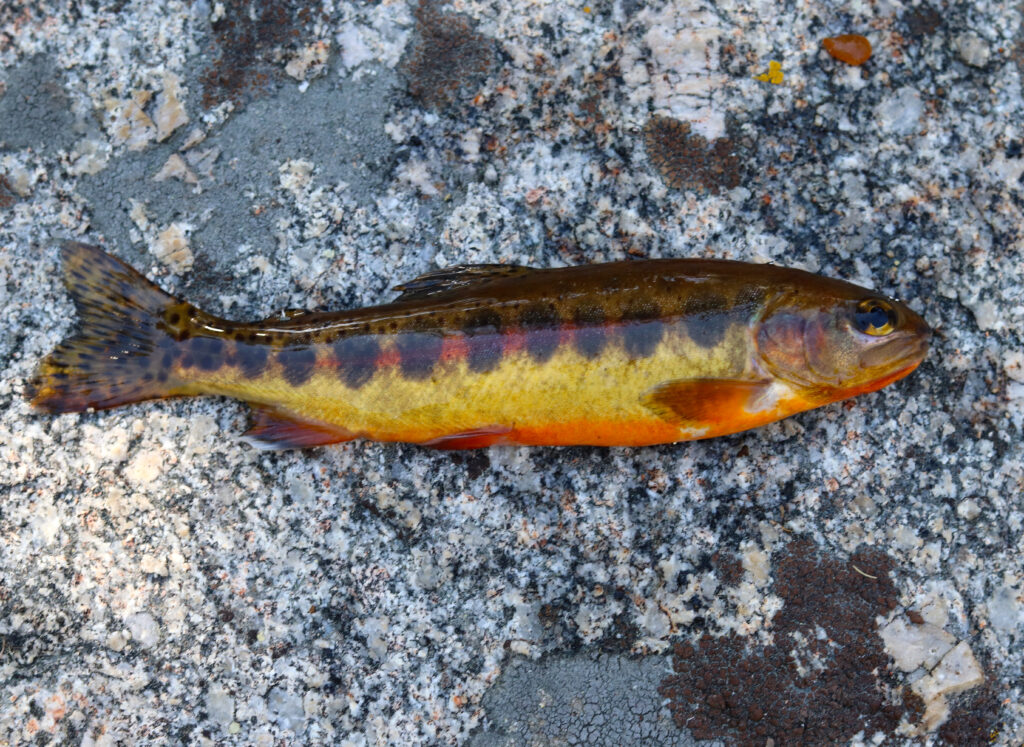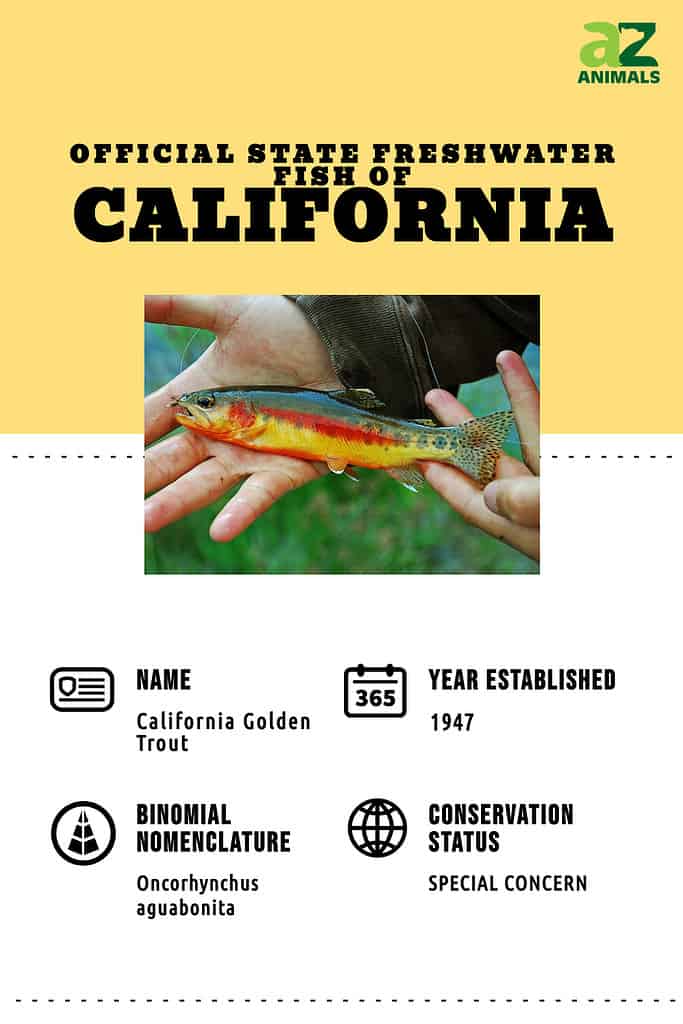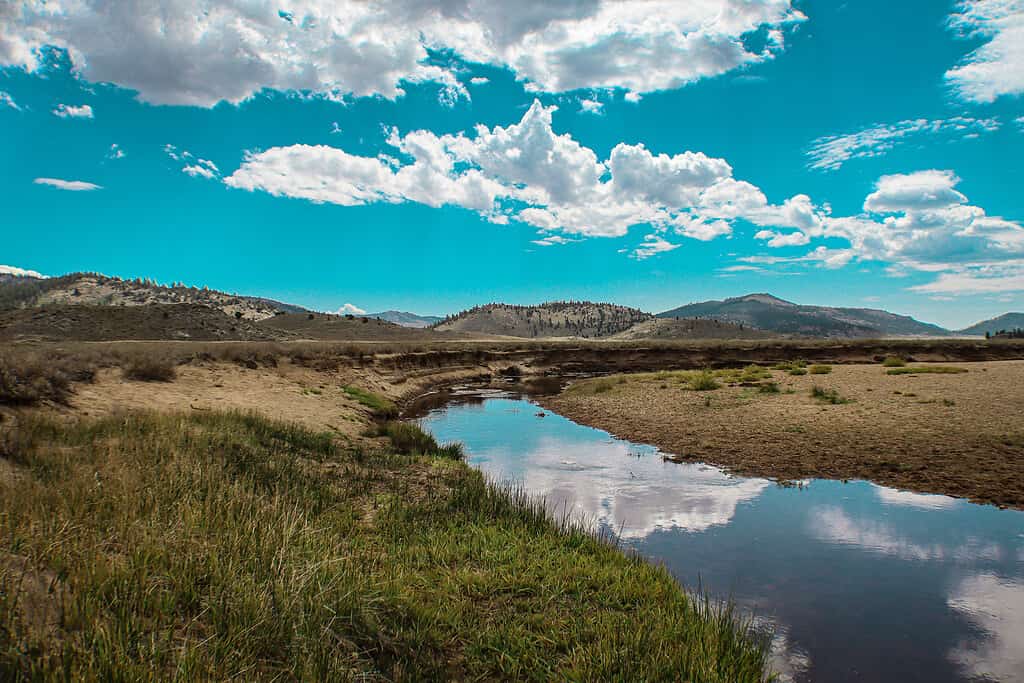With no shortage of bodies of water, California is home to a plethora of wildlife. Although there are plenty of saltwater creatures on the coast, the Golden State has its very own state freshwater fish. It is the California golden trout! Because of their exceptional beauty and the fact that they are only native to California, they were named the official state fish of California in 1947. Today we’re going to dive into everything there is to know about this beautiful fish. This includes what it looks like, where it lives, and any hunting regulations.
Physical Characteristics of California Golden Trout
The name “California Golden Trout” refers to the fish’s vivid yellow-gold coloring. Their distinctive look makes them simple to recognize. Typically, they have copper-colored backs with brilliantly colored golden flanks and vivid red stripes on their flanks. Even mature fish still have parr markings, and their undersides are frequently vivid red. In addition, they feature big spots, black stripes, and white to golden tips on their tail and fins. In waterways, they have a maximum lifespan of nine years and a maximum length of about eight inches. The biggest Golden trout ever recorded weighed 10 pounds and was captured at Virginia Lake in Madera County. They can grow bigger in lakes.

The name “California
Golden Trout
” refers to the fish’s vivid yellow-gold coloring. Their distinctive look makes them simple to recognize.
©Sean Lema/Shutterstock.com
California Golden Trout Distribution
California golden trout can be found in the South Fork Kern River and its tributaries, Golden Trout Creek and Volcano Creek. They are present in the neighboring Cottonwood Lakes and Mulkey Creek. They also live in other watersheds in the Sierra Nevada. This is a result of major pack train collecting and stocking efforts over the past century. More than 300 high alpine lakes and over 680 miles of streams outside of their native area have been stocked with them, including ones in Utah, Wyoming, and Montana.

Habitat and Behavior
The habitat of golden trout is cold, clean alpine streams in grasslands at altitudes of more than 7,500 feet. In general, these fish prefer to reside in the shallow parts of streams, including pools and undercut banks.
In the Golden Trout Wilderness, riparian meadows make up the majority of their environment. They strategically consume both terrestrial and aquatic invertebrates in rivers and streams, while in lakes they primarily consume midges.
They are busier during the day than the majority of additional trout species because there aren’t many natural predators throughout California. When compared to other trout species, California Golden trout spawn older, toward the end of June or early July, and on finer sediments.

California golden trout can be found in the South Fork Kern River and its tributaries.
©Zachary J. Schiavone/Shutterstock.com
History and Status
Although California’s state fish, the California Golden Trout has been poorly managed in the past. As a result, this species now faces a serious threat of extinction. Theodore Roosevelt, the president at the time, ordered examinations into the trout of the upper Kern Basin in 1903 as a result of worries that the California Golden Trout was in danger of going extinct (Evermann 1905).
Early worries centered on the California Golden Trout’s constrained range and ease of harvesting, as well as the simplicity with which they might be caught. But it soon became clear that the arrival of non-native fish in 1976 posed the biggest threat to the California Golden Trout. Congress established the 306,000-acre Golden Trout Wilderness area in 1978 to address these problems. However, grazing methods and recreational use have continued to have an influence on this area ever since.
Conservation
The species’ current range is a very small portion of its historical range. It was formerly thought to span 450 miles of stream. Just 20 square miles, or 4% of the 450 original square miles are thought to be secure, according to the U.S. Forest Service.
Because of hybridization, habitat degradation, and other unfavorable changes, the California golden trout is in danger of going extinct. However, the federal and state agencies in charge of regulating the habitat for California Golden trout and avoiding future loss of its genetic viability have been unable to prevent extinction through their regulatory processes.
Volunteer fly fishers from across the state received DNA sampling training. Afterward, anglers are dispatched to lakes and streams where it is known that golden trout have been introduced. There, they capture a sample of 40 fish and trim off part of their tail fins before putting the fish into their natural environment. The genetic purity of these populations will be determined through DNA testing. This will also assist researchers in determining the true effects of hybridization on the species.
The Federal Endangered Species Act proposed to classify California golden trout in 2000. However, it was decided that the listing was not warranted. The numerous conservation initiatives and protections provided by a multi-agency conservation strategy were mostly to blame for this. As a result, they currently fall under the state’s special concern list of species.
The photo featured at the top of this post is © CSNafzger/Shutterstock.com
Thank you for reading! Have some feedback for us? Contact the AZ Animals editorial team.






